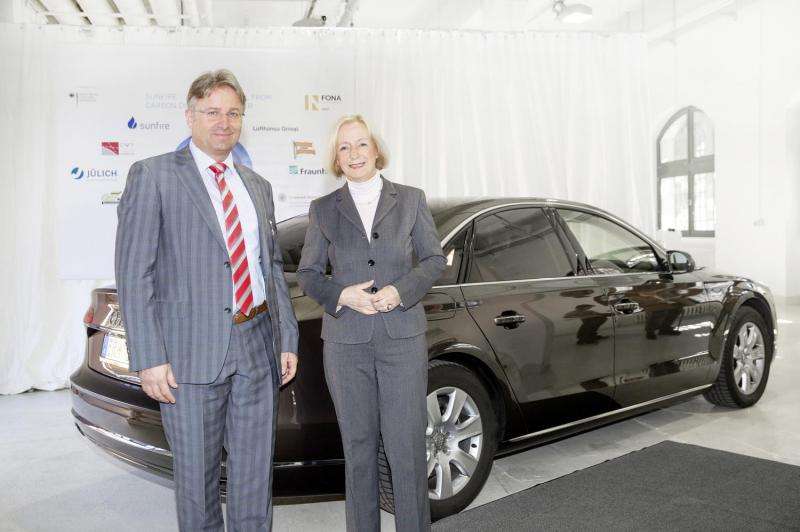April 28, 2015 weblog
Sunfire, Audi en route to synthetic fuel of future

How are scientific minds doing in coming up with a synthetic fuel as a viable alternative to petroleum? For some engineers, this is a long-held dream they refuse to dismiss. A Dresden-based company, sunfire, is confident they have reached a real goal.
The company uses a "green" approach to produce a liquid fuel. Namely, sunfire has succeeded in producing synthetic diesel from air, water and "green" electrical energy, and "an independent laboratory confirmed that the outstanding characteristics of the fuel are superior to the properties of fossil fuel." The synthetic sunfire diesel is particularly eco-friendly. As sunfire CTO Christian von Olshausen said, "The engine runs quieter and fewer pollutants are being created." The fuel is promoted as superior partly because the properties are such that the engine runs smoothly with fewer emissions. The fuel is free from sulfur and aromatic hydrocarbons,
According to project partner Audi, which is sunfire's partner in the automotive sector, .the efficiency of the overall process – from renewable power to liquid hydrocarbon – is very high at around 70 percent.
What are the materials used for the fuel? Audi said the only raw materials needed are water and carbon dioxide. The process enables carbon dioxide from the atmosphere to be turned into a resource. Audi said a portion of the CO2 needed is extracted from the ambient air through direct air capturing, a technology of Audi's Zurich-based partner Climeworks. Audi's project partner and plant operator, sunfire, operates according to the power‑to‑liquid (PtL) principle, producing a liquid fuel.
The pilot plant being operated by sunfire has started producing its first batches of what Audi calls "e-diesel" and Audi said the plant is set to produce over 3,000 liters of Audi e-diesel over the coming months.
The steps used in making the fuel were discussed in the announcement by Audi: First, water heated up to form steam is broken down into hydrogen and oxygen by means of high-temperature electrolysis. The process involves a temperature in excess of 800 degrees Celsius, and heat recovery makes the technique especially efficient. Also, high-temperature electrolysis can be used dynamically, said Audi, to stabilize the grid when production of green power peaks.
The hydrogen reacts with the CO2 in synthesis reactors, again under pressure and at high temperature. The reaction product is a liquid made from long chain hydrocarbon compounds, or "blue crude" which can be refined to yield the Audi e-diesel.
Douglas Perry in The Oregonian picked up on the implications this may have for electric cars and indeed pollution-free transportation. "The electric car," he wrote, "was supposed to be the answer, but while its environmental impact is certainly much smaller than the gas-powered car, it still produces a fair amount of pollution. That is, it's fueled by the electrical grid, which is often driven by coal and other 'dirty' fuels." But, he added, "the necessary technological breakthrough for cars may finally have happened."
Similarly, Joe Lorio in Car and Driver stated that "Synthesized replacements for fossil fuels could be the start of a whole new chapter in the life of internal-combustion propulsion. A car that runs on water has been the green dream for ages, and this appears to be a big step closer to reality."
© 2015 Tech Xplore
















